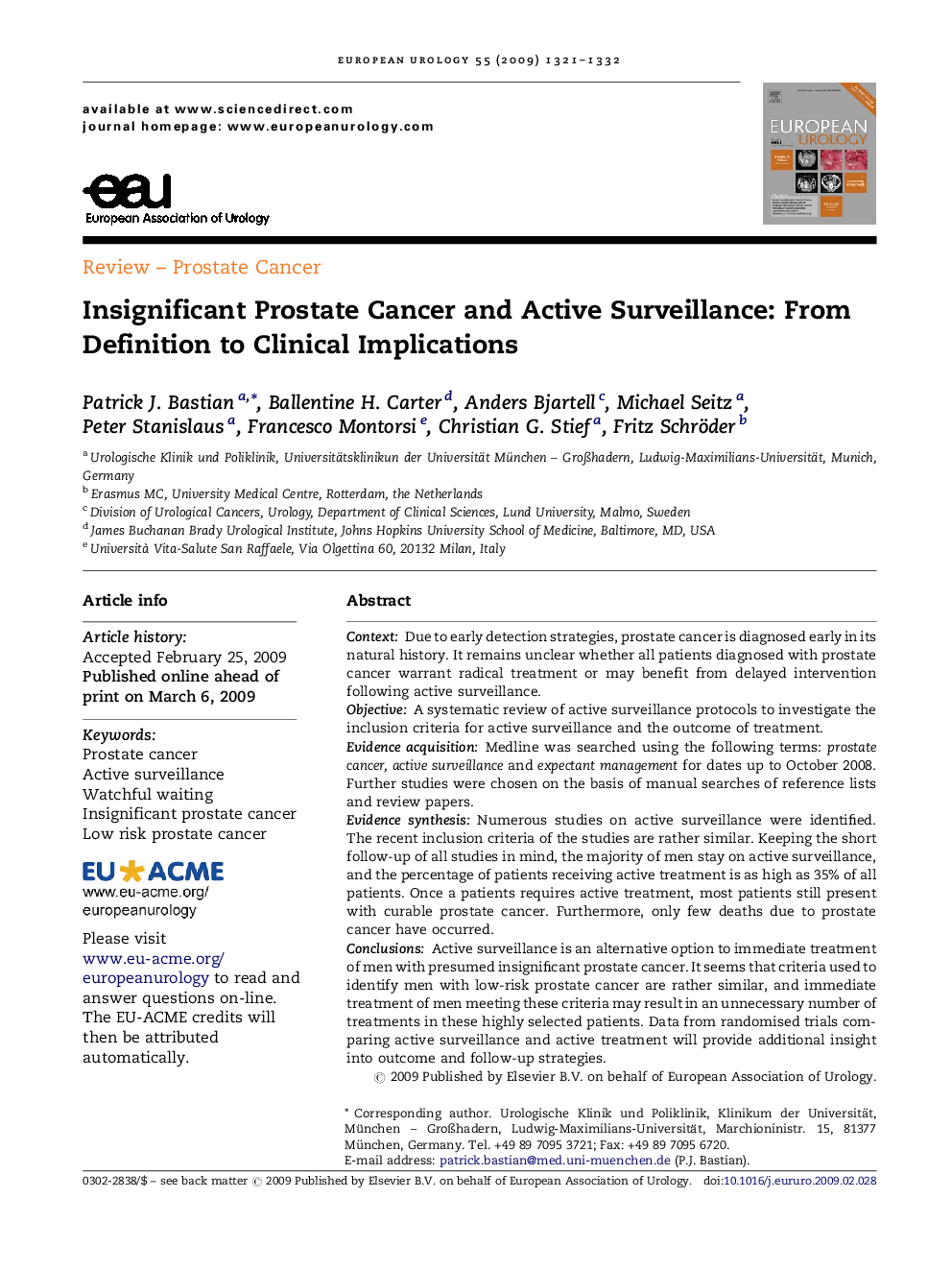| Article ID | Journal | Published Year | Pages | File Type |
|---|---|---|---|---|
| 3928222 | European Urology | 2009 | 12 Pages |
ContextDue to early detection strategies, prostate cancer is diagnosed early in its natural history. It remains unclear whether all patients diagnosed with prostate cancer warrant radical treatment or may benefit from delayed intervention following active surveillance.ObjectiveA systematic review of active surveillance protocols to investigate the inclusion criteria for active surveillance and the outcome of treatment.Evidence acquisitionMedline was searched using the following terms: prostate cancer, active surveillance and expectant management for dates up to October 2008. Further studies were chosen on the basis of manual searches of reference lists and review papers.Evidence synthesisNumerous studies on active surveillance were identified. The recent inclusion criteria of the studies are rather similar. Keeping the short follow-up of all studies in mind, the majority of men stay on active surveillance, and the percentage of patients receiving active treatment is as high as 35% of all patients. Once a patients requires active treatment, most patients still present with curable prostate cancer. Furthermore, only few deaths due to prostate cancer have occurred.ConclusionsActive surveillance is an alternative option to immediate treatment of men with presumed insignificant prostate cancer. It seems that criteria used to identify men with low-risk prostate cancer are rather similar, and immediate treatment of men meeting these criteria may result in an unnecessary number of treatments in these highly selected patients. Data from randomised trials comparing active surveillance and active treatment will provide additional insight into outcome and follow-up strategies.
